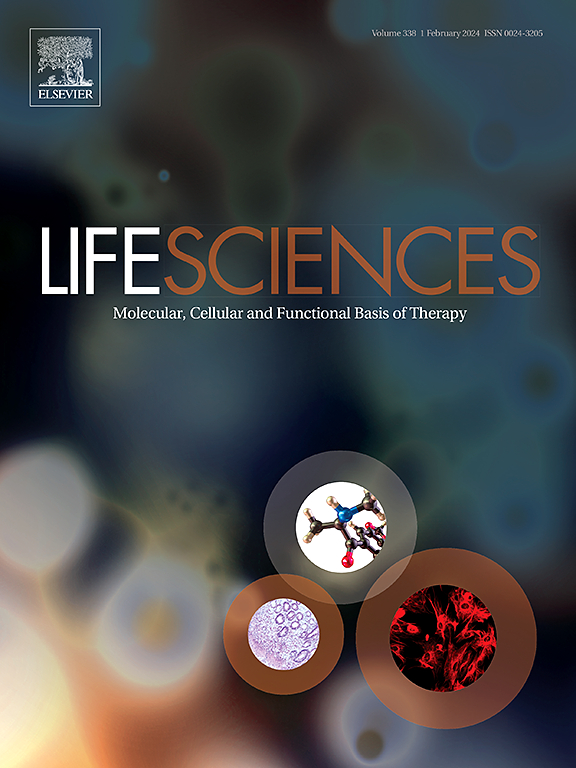The CB1 antagonist Rimonabant improves muscle regeneration and remodels the inflammatory and endocannabinoid profile upon injury in male mice
IF 5.2
2区 医学
Q1 MEDICINE, RESEARCH & EXPERIMENTAL
引用次数: 0
Abstract
Skeletal muscle regeneration upon injury requires timely activation of inflammatory, myogenic, fibrotic, apoptotic and anabolic systems. Optimization of these features might improve the recovery process. Whereas recent data indicate that the endocannabinoid system, and more particularly cannabinoid receptor 1 (CB1) antagonism, is involved in the regulation of inflammatory, myogenic, fibrotic, apoptotic and anabolic pathways, it was never studied whether CB1 antagonism can improve muscle regeneration. The present study investigated the effect of the CB1 antagonist Rimonabant (10 mg/kg/d) on functional (5 days post-cardiotoxin injury; 5DPI) and molecular muscle responses (3DPI and 7DPI) in mice. Rimonabant prevented cardiotoxin-induced muscle strength loss 5DPI, increased myofiber growth (7DPI) and improved the muscle molecular profile 3DPI and 7DPI. In general, inflammation (e.g. p-p65NF-κB, CD80) and apoptosis (e.g. cleaved caspase-3, cleaved PARP) were downregulated by Rimonabant, whereas it upregulated the expression of Pax7 but other myogenic factors remained unaffected by rimonabant. In addition, Rimonabant restored the injury-induced (inflammatory) lipid profile to a large extent, including oxygenated fatty acids, unsaturated fatty acids and endocannabinoids such as 2-arachidonoyl glycerol and palmitoylethanolamide. Altogether, these data show that the endocannabinoid system might be a novel therapeutic target to improve muscle regeneration, which is relevant for age- and disease-related muscle degeneration.

CB1拮抗剂利莫那班可改善雄性小鼠损伤后的肌肉再生并重塑炎症和内源性大麻素谱。
骨骼肌损伤后的再生需要及时激活炎症、成肌、纤维化、凋亡和合成代谢系统。这些特性的优化可能会改善恢复过程。虽然最近的数据表明,内源性大麻素系统,特别是大麻素受体1 (CB1)拮抗作用,参与炎症、肌生成、纤维化、凋亡和合成代谢途径的调节,但CB1拮抗作用是否能改善肌肉再生却从未被研究过。本研究探讨了CB1拮抗剂利莫那班(10 mg/kg/d)对心脏毒素损伤后功能(5 天)的影响;5DPI)和分子肌肉反应(3DPI和7DPI)。利莫那班可预防心脏毒素引起的肌力损失5DPI,增加肌纤维生长(7DPI),改善肌肉分子谱3DPI和7DPI。一般来说,利莫那班下调炎症(如p-p65NF-κB, CD80)和凋亡(如cleaved caspase-3, cleaved PARP),上调Pax7的表达,但其他肌生成因子未受利莫那班影响。此外,利莫那班在很大程度上恢复了损伤诱导(炎症)的脂质谱,包括氧合脂肪酸、不饱和脂肪酸和内源性大麻素,如2-花生四烯醇甘油和棕榈酰乙醇酰胺。总之,这些数据表明内源性大麻素系统可能是改善肌肉再生的一个新的治疗靶点,这与年龄和疾病相关的肌肉变性有关。
本文章由计算机程序翻译,如有差异,请以英文原文为准。
求助全文
约1分钟内获得全文
求助全文
来源期刊

Life sciences
医学-药学
CiteScore
12.20
自引率
1.60%
发文量
841
审稿时长
6 months
期刊介绍:
Life Sciences is an international journal publishing articles that emphasize the molecular, cellular, and functional basis of therapy. The journal emphasizes the understanding of mechanism that is relevant to all aspects of human disease and translation to patients. All articles are rigorously reviewed.
The Journal favors publication of full-length papers where modern scientific technologies are used to explain molecular, cellular and physiological mechanisms. Articles that merely report observations are rarely accepted. Recommendations from the Declaration of Helsinki or NIH guidelines for care and use of laboratory animals must be adhered to. Articles should be written at a level accessible to readers who are non-specialists in the topic of the article themselves, but who are interested in the research. The Journal welcomes reviews on topics of wide interest to investigators in the life sciences. We particularly encourage submission of brief, focused reviews containing high-quality artwork and require the use of mechanistic summary diagrams.
 求助内容:
求助内容: 应助结果提醒方式:
应助结果提醒方式:


